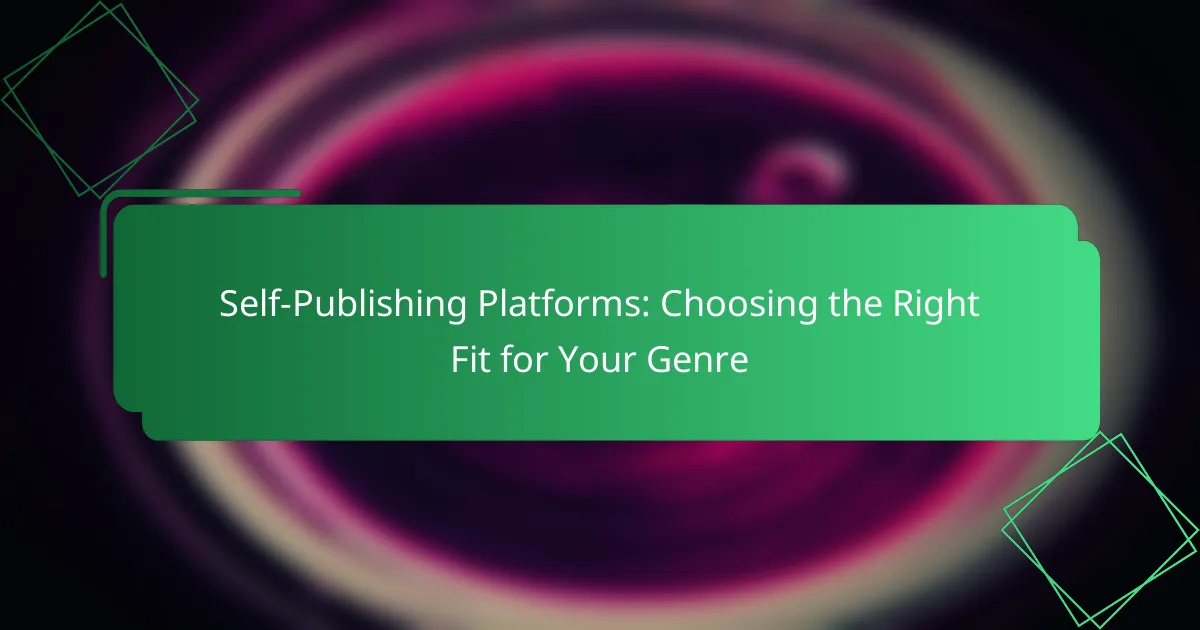Choosing the right self-publishing platform is crucial for authors, as it can significantly impact the success of their work. Fiction writers often seek user-friendly interfaces and strong marketing tools, while non-fiction authors may prioritize tailored services and distribution options. Understanding the unique needs of your genre will help you select a platform that maximizes your reach and revenue potential.
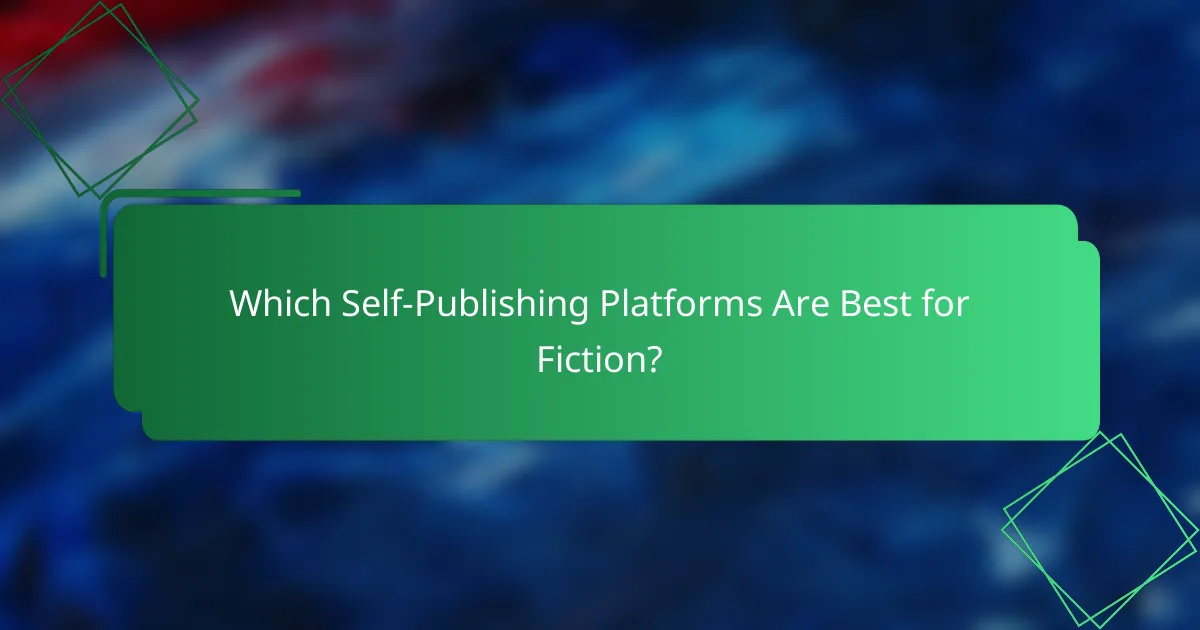
Which Self-Publishing Platforms Are Best for Fiction?
For fiction writers, the best self-publishing platforms offer user-friendly interfaces, broad distribution, and robust marketing tools. Key considerations include royalty rates, ease of use, and the ability to reach target audiences effectively.
Amazon Kindle Direct Publishing
Amazon Kindle Direct Publishing (KDP) is a leading platform for fiction authors, allowing them to publish eBooks and paperbacks directly to Amazon. With KDP, authors can earn royalties of up to 70% on eBook sales, making it a lucrative option for many.
Authors can easily format their manuscripts using KDP’s guidelines and upload them in various formats. Additionally, KDP Select offers promotional tools, such as Kindle Unlimited, which can enhance visibility and sales. However, exclusivity requirements apply if you enroll in KDP Select.
Smashwords
Smashwords is a popular platform that enables authors to distribute their fiction eBooks to multiple retailers, including Apple Books, Barnes & Noble, and Kobo. This wide distribution can significantly increase an author’s reach and potential sales.
Smashwords offers a straightforward publishing process, but authors should pay attention to formatting requirements to ensure their books meet the platform’s standards. The royalty rates vary depending on the retailer, typically ranging from 60% to 80% for direct sales.
Draft2Digital
Draft2Digital is another effective self-publishing platform that simplifies the distribution of fiction eBooks across various online retailers. It is known for its user-friendly interface and excellent customer support, making it a great choice for new authors.
With Draft2Digital, authors can access a range of formatting tools and promotional options. The platform offers competitive royalty rates, generally around 60% to 70%, and does not require exclusivity, allowing authors to publish on other platforms simultaneously.
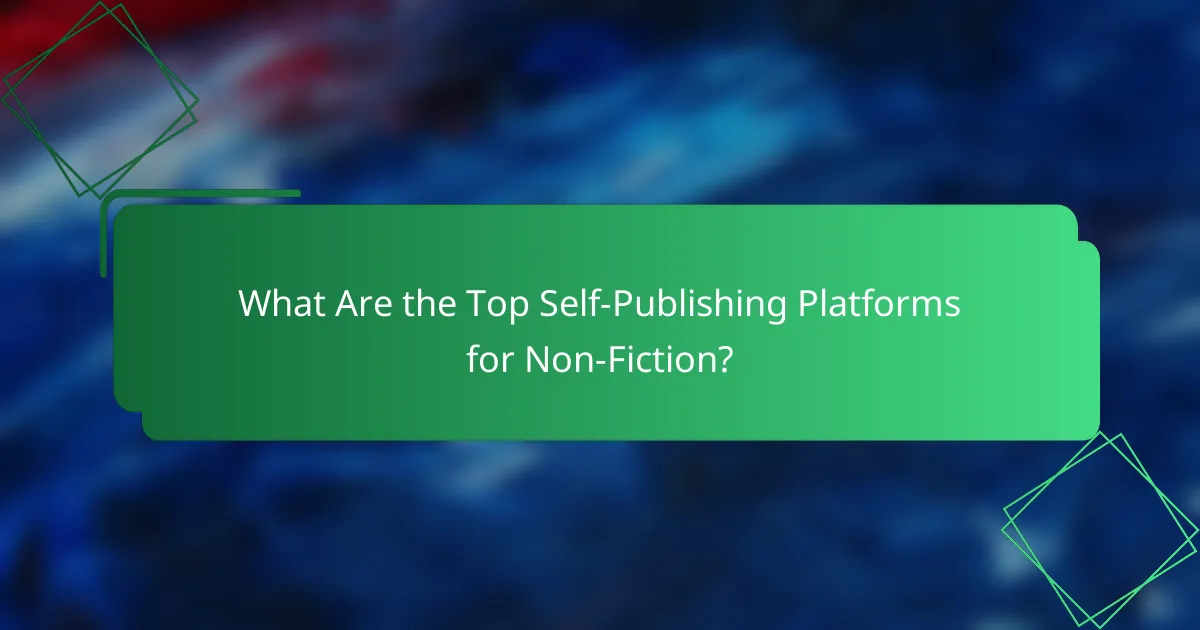
What Are the Top Self-Publishing Platforms for Non-Fiction?
The best self-publishing platforms for non-fiction authors provide tools and services tailored to their specific needs. Key considerations include distribution options, formatting support, and pricing structures, which can vary significantly across platforms.
IngramSpark
IngramSpark is a popular choice for non-fiction authors seeking wide distribution. It offers access to a vast network of retailers and libraries, making it easier to reach a global audience.
Authors should consider the upfront costs associated with IngramSpark, which typically range from $49 to $99 for setup. However, the platform’s extensive reach can justify this investment, especially for those aiming for professional-quality print and eBook formats.
BookBaby
BookBaby is known for its comprehensive self-publishing services, including editing, design, and distribution. It caters to non-fiction authors by providing tailored packages that address specific genre needs.
Pricing for BookBaby can vary widely, with basic packages starting around $299. Authors should evaluate the services included in each package to ensure they align with their publishing goals and budget.
Lulu
Lulu is a versatile platform that allows non-fiction authors to publish in multiple formats, including print and eBooks. It is user-friendly, making it accessible for those new to self-publishing.
While Lulu does not charge upfront fees, authors should be aware of the costs associated with printing and distribution, which can affect profit margins. It’s advisable to calculate potential expenses and set competitive pricing for their books to maximize earnings.
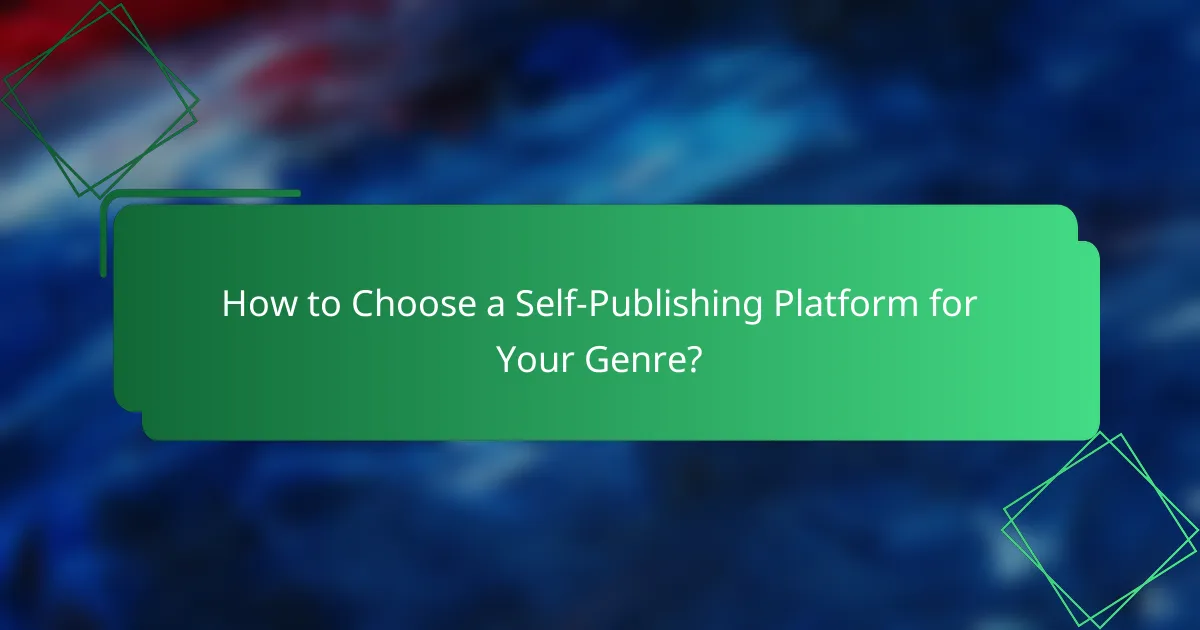
How to Choose a Self-Publishing Platform for Your Genre?
Choosing the right self-publishing platform for your genre involves understanding your distribution needs, royalty preferences, and formatting capabilities. Each genre has unique characteristics that may influence which platform best supports your goals and audience.
Assessing Distribution Options
When selecting a self-publishing platform, consider where you want your book to be available. Some platforms offer wide distribution across major retailers, while others may focus on niche markets. For example, if you write romance novels, platforms like Amazon Kindle Direct Publishing (KDP) can provide extensive reach, while specialized platforms might cater better to specific audiences.
Evaluate the geographical reach of each platform as well. If you aim to sell in Europe, ensure the platform has strong connections with European retailers and distributors. Look for options that allow you to distribute both eBooks and print copies to maximize your audience.
Evaluating Royalty Structures
Royalty structures vary significantly among self-publishing platforms, impacting your earnings. Most platforms offer royalties ranging from 35% to 70% for eBooks, depending on pricing and distribution choices. For instance, KDP offers a 70% royalty option if your eBook is priced within a certain range.
Consider the implications of different royalty rates on your overall income. Platforms with lower royalties might have fewer distribution options, while those with higher rates could provide better exposure. Always read the fine print regarding fees and conditions that may affect your earnings.
Considering Formatting Tools
Formatting tools are essential for ensuring your book meets industry standards. Some self-publishing platforms include built-in formatting tools that simplify the process, while others may require you to format your manuscript externally. For example, platforms like Draft2Digital offer user-friendly formatting options that can save you time and effort.
Check if the platform supports various file types and offers templates suitable for your genre. If you write children’s books, for instance, look for platforms that allow for rich media and illustrations. Avoid platforms that impose strict formatting rules that could limit your creative expression.
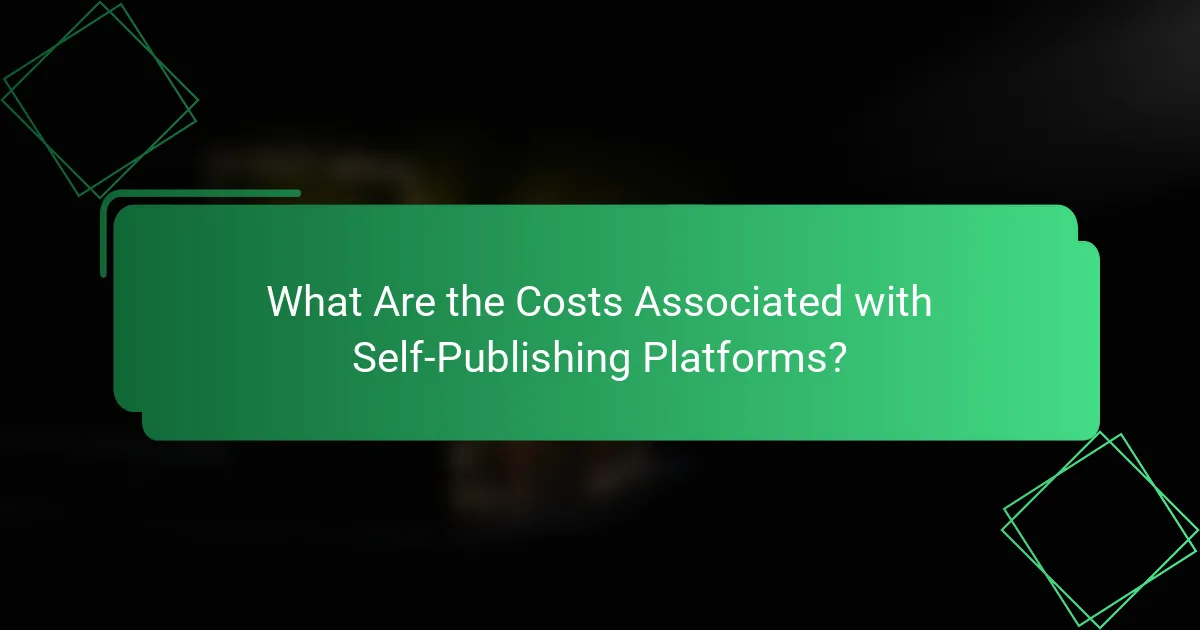
What Are the Costs Associated with Self-Publishing Platforms?
Self-publishing platforms come with various costs that can impact your overall budget. Understanding these expenses, including upfront fees, commission rates, and additional service costs, is crucial for selecting the right platform for your genre.
Upfront Fees
Upfront fees are initial costs that authors may encounter when using a self-publishing platform. These can range from a few dollars for basic services to several hundred dollars for premium features or packages. It’s essential to evaluate what is included in these fees, such as formatting, cover design, or distribution options.
Some platforms offer free publishing options but may charge for additional services. Always read the fine print to understand what you are paying for and consider your budget accordingly.
Commission Rates
Commission rates refer to the percentage of sales that the self-publishing platform retains from your book sales. These rates typically range from 15% to 30%, depending on the platform and distribution channels. For example, Amazon Kindle Direct Publishing takes around 30% for eBook sales, while platforms like Smashwords may have varying rates based on distribution.
When choosing a platform, consider how commission rates will affect your royalties. A lower commission might seem appealing, but it could come with higher upfront fees or fewer services.
Additional Services Costs
Many self-publishing platforms offer additional services that can enhance your book’s quality and visibility, such as professional editing, marketing, and promotional tools. These services often come at an extra cost, which can vary widely. For instance, professional editing can range from a few hundred to over a thousand dollars, depending on the length and complexity of your manuscript.
Before committing, assess which additional services you truly need and whether the costs align with your budget. Prioritize essential services that will improve your book’s chances of success in the market.
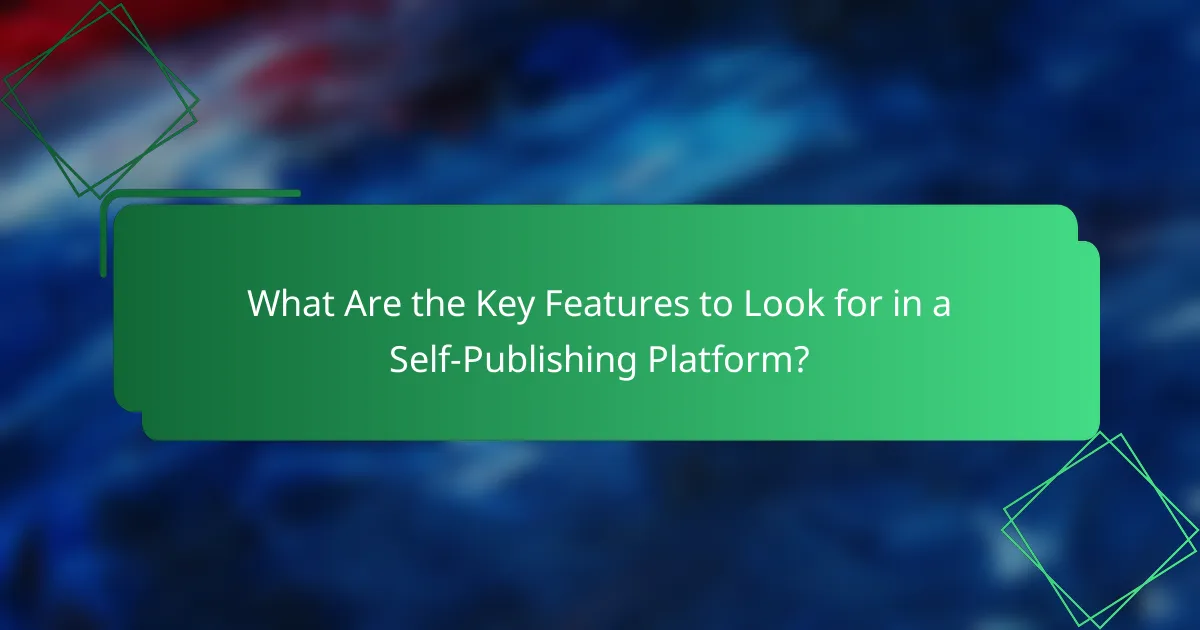
What Are the Key Features to Look for in a Self-Publishing Platform?
When selecting a self-publishing platform, prioritize features that align with your genre and publishing goals. Key aspects include ease of use, marketing assistance, and reliable customer support, which can significantly impact your publishing experience and success.
User-Friendly Interface
A user-friendly interface is crucial for authors, especially those new to self-publishing. Look for platforms that offer intuitive navigation, clear instructions, and easy access to tools for formatting and uploading your work. A streamlined process can save you time and reduce frustration.
Consider platforms that provide templates tailored to your genre, as these can simplify the design process. For instance, if you’re publishing a children’s book, a platform with specific templates for illustrations can be beneficial.
Marketing Support
Effective marketing support is essential for reaching your target audience. Choose a self-publishing platform that offers promotional tools, such as email marketing, social media integration, and options for discounted pricing or giveaways. These features can enhance your visibility and sales potential.
Additionally, some platforms provide access to marketing resources or partnerships with bookstores and libraries. Evaluate whether the platform offers these services, as they can significantly boost your book’s exposure.
Customer Service
Reliable customer service can make a significant difference in your self-publishing journey. Look for platforms that offer multiple support channels, such as live chat, email, and phone support. Quick response times and knowledgeable representatives can help resolve issues efficiently.
Before committing, check reviews or testimonials regarding the platform’s customer service. A platform with a reputation for excellent support can help you navigate challenges more smoothly, ensuring a better overall experience.
